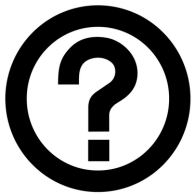The question mark is a punctuation mark that is used for all direct questions and to express uncertainty, ignorance or doubt.
Where are you going?
What is the time?
Where did you put my shoes?
Is Australia in Asia?
When using the question mark, keep the following rules in mind:
Rule 1. A question mark replaces a period at the end of a sentence.
Incorrect: Kate, when are you going to call the builder to make inquiries about constructing a garage in the driveway?.
Correct: Kate, when are you going to call the builder to make inquiries about constructing a garage in the driveway?
Rule 2. Words that follow a question mark should always be capitalized.
Incorrect: Dave, where’s the ketchup? i want to put some on my burger.
Correct: Dave, where’s the ketchup? I want to put some on my burger.
Rule 3. Only one question mark should be used at the end of a sentence. An extra one should never be added for emphasis.
Incorrect: Oh my gosh, did you hear that NASA said that we could potentially find alien life in the next two years?
Correct: Oh my gosh, did you hear that NASA said that we could potentially find alien life in the next two years?
Rule 4. Question marks should always be used at the end of rhetorical questions (a question where no answer is expected).
Incorrect: Are you having a laugh. Stop being so ungrateful.
Correct: Are you having a laugh? Stop being so ungrateful.
Rule 5. A question mark should never be used for reported questions.
Incorrect: She wondered if she was coming out tonight?
Correct: She wondered if she was coming out tonight.
The question mark is a common punctuation mark. See the following the video to review what you’ve read about using the question mark.
The question mark is of course just one of three punctuation marks that you can use at the end of a sentence, the other two being the period and the exclamation mark.
